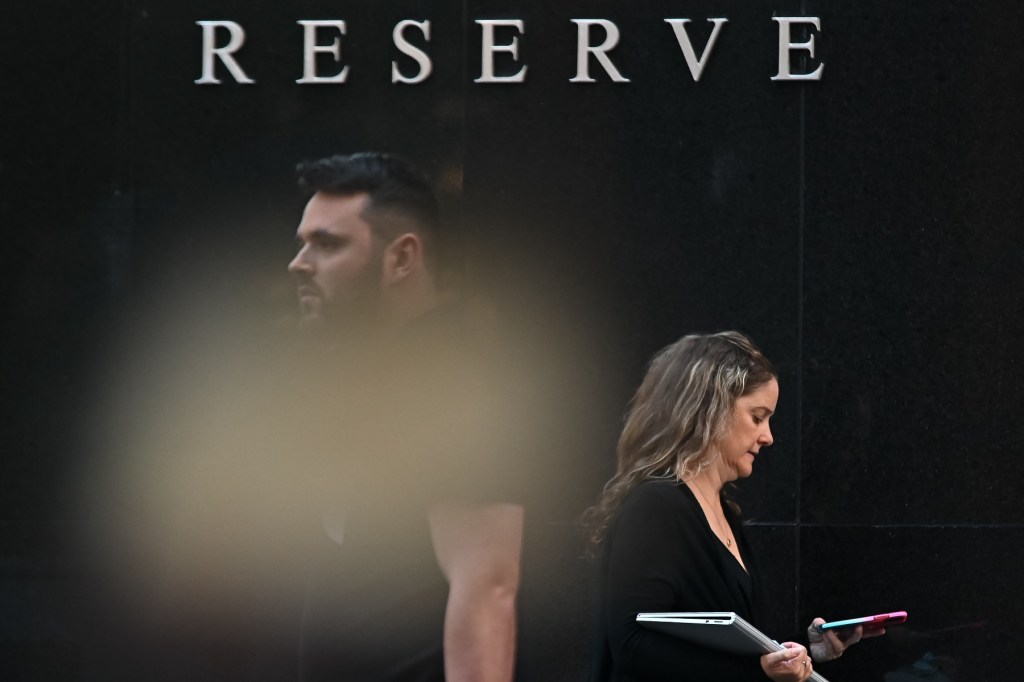Inflation up but RBA’s ‘core’ target fell, delivering ‘good news’ on future rate rise

- by Admin
- July 31, 2024
Australia’s annual rate of inflation has risen to 3.8 per cent, up from 3.6 per cent at the start of the year.
According to the Australian Bureau of Statistics (ABS), prices rose by 1 per cent in the June quarter, which followed the 1 per cent increase in prices in the March quarter.
That has pushed the pace of headline inflation up slightly, which is the first increase in annual consumer price index (CPI) inflation since the December 2022 quarter.
Economists had anticipated the increase in headline prices so it hasn’t taken officials by surprise.
But significantly, the “trimmed mean” measure of inflation, which is an important measure of underlying or “core” inflation the Reserve Bank focuses on, fell slightly in the June quarter.
It declined from an annual rate of 4 per cent to 3.9 per cent.
The RBA wants that trimmed mean measure of inflation to fall back down into the 2 to 3 per cent range, and that specific measure of inflation has been declining continuously for the last six quarters.
“Today’s CPI release confirms that inflation is as sticky as expected but, importantly, is no higher than the RBA had forecast it to be,” said BDO Economics partner Anders Magnusson.
“This is good news as the RBA tries to keep a lid on inflation without losing the gains made by workers through a strong labour market,” he said.
“Today’s release has not changed our forecast that the next movement by the RBA will be a rate cut in early 2025. We don’t believe that the RBA will raise the cash rate next week, but the ongoing cost-of-living struggles for many Australians will likely continue until early next year,” he said.
The RBA Board will meet on Monday and Tuesday next week to discuss what to do with interest rates.
The cash rate target is currently 4.35 per cent.
A number of market economists have welcomed the inflation numbers, saying a rate rise next week was probably unlikely now.
Financial markets analyst Evan Lucas said the value of Australia’s dollar dropped immediately once the numbers were released — from roughly US65.32c to US64.84c — which suggested currency traders weren’t expecting a rate hike next week either.
Treasurer Jim Chalmers also welcomed the inflation numbers, noting they were in line with RBA forecasts.
He also pointed out that headline inflation had taken longer to start rising quickly in Australia than in comparable countries, and it was clearly falling down again with a similar lag.
“We’ve seen around the world that inflation can zig and zag on the way down – and, because Australia’s inflation peaked lower and later than in many countries, we’re seeing that trend here now,” he said.
“We know that demand is weak in our economy because people are under pressure, which is why our economic plan is all about fighting inflation without crunching the economy.
“Our cost-of-living relief is easing pressure on Australians, and ABS analysis today shows it’s directly taking pressure off inflation,” Dr Chalmers said.
Annual food inflation eases for the sixth quarter in a row
Data show annual food inflation eased to 3.3 per cent in the June quarter, down from 3.8 per cent in March and the peak of 9.2 per cent in December 2022.
The ABS said price rises were lower across most food categories, except for fruit and vegetables, which were 3.7 per cent higher compared to 12 months ago.
“Unfavourable growing conditions drove higher prices for grapes, strawberries, blueberries, tomatoes and capsicums,” the ABS noted.
Meat and seafood prices, as a category, have now fallen by 0.4 per cent over the last 12 months.
Compared to 12 months ago, lamb prices are down 10.9 per cent and beef is down 3.6 per cent, although pork is up 4.7 per cent.
Rental price growth remains high due to tight rental markets
However, the ABS data show that, despite the small decline in underlying inflation in the June quarter, a number of key prices in the economy still increased too quickly for too many households.
Rental prices have risen by 7.3 per cent over the last 12 months, down from 7.8 per cent in the March quarter.
ABS officials said that rental price growth continued to reflect low vacancy rates and a tight rental market, and they would have been higher without government support.
“The rate of growth in rental prices was moderated by changes to Commonwealth Rent Assistance (CRA), with rent assistance rates updated by CPI indexation on 20 March and 20 September each year,” ABS officials said.
“In addition to the usual updates, the maximum rate available for CRA was increased by 15 per cent in September last year. Increases to the CRA reduce the amount of rent payable by eligible recipients.
“Excluding these changes to CRA, rents would have increased by 9.1 per cent over the 12 months to the June 2024 quarter,” the ABS said.
Annual growth for insurance premiums remains high
Insurance prices also continued to record exceptionally strong growth in the June quarter, increasing by 14 per cent over the last 12 months.
“Higher reinsurance, natural disaster and claims costs continued to drive higher premiums for motor vehicle, house and home contents insurance,” ABS officials said.
The gap between essential and non-essential prices
Overall, the gap increased between prices of non-discretionary and discretionary goods and services in the June quarter.
Non-discretionary inflation includes goods and services that are considered “essential” and which households are less likely to reduce their consumption of, such as food, automotive fuel, housing and health costs.
Non-discretionary goods and services rose 1.1 per cent in the June quarter, and 4.5 per cent through the year.
The rise this quarter was driven by Rents (+2 per cent), Medical and hospital services (+2.1 per cent), New dwelling purchase by owner occupiers (+1.1 per cent) and Fruit (+10.6 per cent).
Discretionary goods and services are considered “optional” purchases and include restaurant meals, clothing, furniture, motor vehicles and holiday travel.
Discretionary goods and services rose 0.8 per cent in the June quarter, and 2.8 per cent through the year.
The rise this quarter was driven by International holiday travel and accommodation (+8.1 per cent), Tobacco (+3 per cent) and Furniture (+3.3 per cent).
Rate cut expected later this year?
Luci Ellis, a former RBA assistant governor, now Westpac Group chief economist, said it now looked increasingly likely that the RBA would cut interest rates in November.
“Another quarter of inflation data should be enough to convince the RBA Board that disinflation is on track and that inflation will be back into the target range on the desired timetable,” she wrote in a note.
“That would lead the board to the conclusion that monetary policy does not need to be as tight as it currently is for much longer.
“Recall that the RBA regards the current stance of monetary policy as tight.
“If the cash rate remained where it is indefinitely, inflation would ultimately decline below the 2-3 per cent target range.
“Monetary policy operates with a lag, so rate cuts need to start ahead of inflation reaching target. If the board waits too long, it will risk undershooting the target for no benefit.
“So rate cuts are likely in the near future, provided inflation continues to traverse the trajectory that the RBA Board is seeking to achieve,” she said.
Posted , updated
The Latest News
-
December 25, 2024Where to watch Australia vs. India 4th Test: Free live stream, free-to-air channel, start time for cricket match | Sporting News Australia
-
December 25, 2024Gearing Up for Australian Open, Nick Kyrgios Elevated in Bold Predictions From Renowned Tennis Experts
-
December 25, 2024Dads’ day out! Australian stars unwind with with wives, kids at MCG. Watch | Cricket News – Times of India
-
December 25, 2024Border-Gavaskar Trophy: What is Australia’s record in Melbourne in Test matches? | Sporting News Australia
-
December 25, 2024India must continue to exploit ‘brittle’ Australian line-up: Ravi Shastri | Cricket News – Times of India



